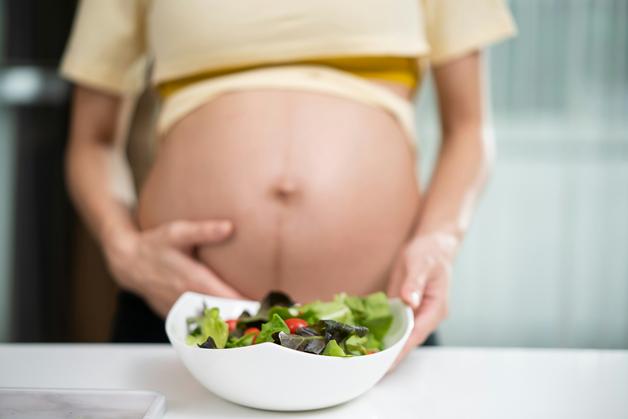A routine prenatal check-up, an unexpected look of concern, and suddenly, the term “protein in urine pregnancy” enters the conversation. Instantly, doubts may start swirling in your mind. Is this a signal of major trouble, or just a trivial blip that will resolve by itself? Could the health of your baby or your own be at stake? Should you consider making changes in your lifestyle, or even brace for hospital monitoring? Questions like these—so common, yet so deeply personal—make it clear how essential it is for parents to be equipped with accurate, nuanced, and practical medical information. Through this exploration, you’ll find why your kidneys undergo subtle transformations, decode what test results might mean, track the early warning signs, and discover how scientific clarity goes hand in hand with confidence during pregnancy.
What Happens to Your Kidneys During Pregnancy?
Did you know that kidneys, those unsung heroes quietly working day and night, have to ramp up their efforts during pregnancy? Under the hormonal orchestration of pregnancy, blood volume increases and your kidneys filter more blood (a process called hyperfiltration). Sometimes, this leads to a slight “leak” of proteins—usually albumin—into urine. Such physiological proteinuria (protein in urine between 250–300 mg per 24 hours) is within expected limits and rarely causes alarm. Why is this range so precise? Because above this threshold, the system’s balance may be off, hinting that your body needs extra vigilance. Yet, for most, there are no dramatic changes—no discomfort, no worrying symptoms. This is why the protein in urine pregnancy screening is embedded in every prenatal visit.
Types and Causes of Protein in Urine During Pregnancy
Not all protein spillage spells the same story. The protein in urine pregnancy scenario unfolds across several types:
- Physiological (Normal) Proteinuria: Slight protein due to natural kidney adaptation, not considered worrisome below 300 mg/24 hours.
- Transient Proteinuria: Temporary increases, perhaps after heavy exercise, dehydration, fever or even emotional stress—often resolving spontaneously.
- Orthostatic Proteinuria: Protein detected only when standing, completely absent when lying down; mostly harmless and typical in younger people.
- Persistent (Pathological) Proteinuria: Now, if protein persists at higher levels, it stands out as a potential clue for underlying conditions—think preeclampsia (high blood pressure, proteinuria, organ involvement), chronic kidney disease, glomerulonephritis, or uncontrolled diabetes or lupus.
Other contributing factors can include:
- Gestational hypertension: The classic duo featuring after 20 weeks—high blood pressure and proteinuria.
- Urinary tract infections: Very common in pregnancy; can temporarily bump up urinary protein.
- Certain medications: Sometimes responsible for a passing rise in protein levels.
- Obesity, multiple gestation, advanced maternal age, or family history of renal concerns: These add to the strain on body systems, subtly increasing risk.
Results should always be read in context, weighing medical background, associated factors, and timing. Misinterpreting findings can either create unnecessary panic or overlook early warnings.
Spotting Symptoms and When to Seek Guidance
Protein in urine can be sneakily silent, lurking without any tangible hint, or it might just present as foamy urine. What should actually put you on alert? The protein in urine pregnancy concern intensifies if you notice:
- Marked swelling—especially of the face, hands, or ankles
- Fast, unexplained weight gain
- Unyielding or severe headache
- Disturbances in vision—blurred vision or flashes
- Persistent pain in the upper right abdomen
- Significantly decreased urine output or notably dark urine
- Overwhelming fatigue or intractable nausea
Although a little swelling is typically just one more item on the pregnancy checklist, pronounced or sudden symptoms—especially in tandem—deserve prompt attention. And sometimes, protein sneaks in with zero warning (asymptomatic proteinuria), which is precisely why regular screening is your shield.
How Is Protein in Urine Detected and Monitored?
At each check-up, a simple dipstick test serves as the first gatekeeper. Should protein be found, what follows? Here’s a practical breakdown:
- 24-hour urine collection: The gold standard for exact measurement; above 300 mg in 24 hours means the body asks for extra attention.
- Protein-to-creatinine ratio: A spot test giving quick clues; equal or above 0.3 raises a red flag.
- Additional blood analyses can provide a snapshot of kidney, liver, and blood cell status.
- Test results aren’t always straightforward—dehydration, recent exercise, infections, even sample errors may twist the numbers. Double-checks are key.
The pattern, frequency, and variety of monitoring will depend on these values, your baseline health, and whether any worrisome signs emerge alongside.
What Are the Risks for Mother and Baby?
Why do healthcare providers show such concern over protein in urine pregnancy especially when persistent or combined with high blood pressure? The answer: preeclampsia. Characterised by the tandem of high blood pressure and significant proteinuria after 20 weeks, preeclampsia can have widespread impact if not recognised and managed.
Risks for mothers may include:
- Short or long-term kidney problems
- HELLP syndrome (hemolysis, elevated liver enzymes, low platelets)
- Seizures (eclampsia)
- Stroke
- Rarely, heart disease or chronic hypertension after childbirth
For babies:
- Growth restriction inside the womb (IUGR)
- Early arrival (preterm birth), sometimes necessary for safety
- Lower birth weights and, in rare circumstances, stillbirth
However, before anxiety takes centre stage, remember: When protein in urine pregnancy and its implications are discovered early, and action is taken, the vast majority of outcomes for both mother and baby remain positive.
Practical Management of Proteinuria During Pregnancy
How you handle protein in urine pregnancy relies on the cause and severity. Here’s a distilled approach:
- Urinary tract infection: Short course of pregnancy-safe antibiotics, then confirm cure.
- Preeclampsia or hypertension: Use of blood pressure controlling medications (like labetalol or nifedipine), careful follow-up, possible magnesium sulphate for seizure prevention. If things accelerate or protein rises sharply, earlier delivery (especially after 34–37 weeks) is often considered.
- Other chronic medical issues: Meticulous management of conditions like diabetes or kidney disease. Certain medicines, like ACE inhibitors or ARBs, need stopping because of risks to the baby.
- Lifestyle adjustments: Well-balanced meals (not too much salt, just right), consistent hydration, gentle exercise (walking, prenatal yoga), and strictly avoiding tobacco.
- More severe forms: If protein exceeds 3g/day or symptoms escalate rapidly, hospital-level observation may be necessary—where a team comprising gynaecologists, nephrologists, and possibly other experts will join forces.
The right time for delivery or hospitalisation is always decided with a tailored approach, keeping maternal and fetal well-being at the heart of every decision.
Preventive Steps and Improving Outcomes
While fate deals its own cards sometimes, proactive steps can tip the balance in your favour:
- Steady attendance at all prenatal appointments—this is the best opportunity for early detection
- Astute management of known issues—like high blood pressure or diabetes—with expert help
- Emphasise calcium, antioxidants, and moderation of sodium in meals
- Drink sufficient water, with meals spread over the day to give the kidneys a gentler task
- Stay active with safe, enjoyable movement—walking, swimming, gentle yoga
- Steer clear of tobacco and processed foods
- Tune in quickly to any new symptoms—your own perceptions are valuable
Even after childbirth, keeping a watchful eye on kidney and heart status is wise, especially if protein in urine pregnancy or preeclampsia occurred. Persistent symptoms or lab irregularities? Keep your caregivers informed without delay.
Everyday Tips for Parents: Making Life Easier
- Physical activity: Opt for regular, soothing exercise like calm walks or prenatal yoga—both heart and kidneys benefit.
- Dietary habits: Whole foods, leafy greens, dairy, lean protein, pulses—these are your allies. Go easy on salt, shun raw or mercury-heavy fish, and moderate caffeine.
- Rest and sleep: Quality sleep (at least 7–9 hours), with naps as needed. Resting on the side increases blood flow, supporting your baby’s nourishment.
- Managing stress: Simple mindfulness, focused breathing, leaning on a supportive circle—these techniques quietly protect your and your baby’s well-being.
Myths and Facts About Protein in Urine Pregnancy
Myth: High-protein diet causes protein in urine pregnancy.
Fact: Only a pre-existing kidney problem can turn dietary protein into a concern—a typical Indian meal plan isn’t a culprit on its own.Myth: Protein in urine is always synonymous with kidney failure.
Fact: Mild proteinuria during pregnancy is often benign. It is sustained or large amounts that suggest deeper problems.Myth: Only first pregnancies bring this risk.
Fact: Protein in urine pregnancy is possible in any gestation, especially with associated risk factors.Myth: Every time proteinuria appears, things are very serious—or always harmless.
Fact: Context matters. Some cases resolve on their own, others indicate pressing health needs.
Follow the science-led path, maintain open dialogues with your healthcare team, and trust in modern medical tools for reassurance.
After Pregnancy: Why Ongoing Health Checks Still Matter
Experiencing protein in urine pregnancy isn’t the end of the journey; it’s an invitation to attentive postnatal care:
- Assess for resolution at 6–12 weeks after birth
- Track blood pressure log for any persistent elevation
- Run kidney function checks as advised
- Consult a nephrologist if protein levels stay high or kidney signs remain questionable
- Prioritise dietary balance, gentle movement, and stay away from anything that might harm the kidneys
A history involving preeclampsia or substantial proteinuria means keeping a close partnership with your health team long-term—your kidneys and heart will thank you.
Key Takeaways
- Protein in urine pregnancy is a frequent discovery and, when managed appropriately, poses little threat in most cases—but it can unveil serious challenges like preeclampsia alongside blood pressure spikes or symptoms.
- Consistent prenatal care and prompt discovery are your strongest protections against complications for your baby and yourself.
- Smart lifestyle habits, on-time medical reviews, and stress minimisation all help maintain kidney and blood pressure wellness.
- Never hesitate to report signs like swift weight gain, abrupt swelling, persistent headaches, vision changes, or unusual fatigue—quick action is always the wisest course.
- With reliable monitoring and proper interventions, the outlook for both mother and child remains optimistic.
- For tailored advice, support and interactive health tools, feel free to download the application Heloa, offering free child health questionnaires and practical, localised answers.
Questions Parents Ask
Can dehydration cause protein in urine during pregnancy?
Absolutely, dehydration may temporarily push up protein in urine pregnancy results. When your fluid intake dips, the kidneys have to compensate, sometimes releasing proteins into urine. If you’ve noticed such a result, or it happens alongside other symptoms, just mention it during your next check-up. Staying hydrated helps balance everything out.
Does exercise influence protein in urine results during pregnancy?
Physical activity—especially if intense or novel to your body—can lead to a slight, transient bump in protein in urine pregnancy readings. These rises are usually short-lived, returning to normal with gentle routine. If you’ve had a urine sample soon after exercise, don’t be surprised by a temporary change; you can always discuss the test timing with your doctor for clarity.
How is proteinuria monitored if I’ve had it in a previous pregnancy?
Prior history means closer eyes on your health this time around. More frequent urine and blood pressure monitoring, an extra lookout for warning signs, and possibly periodic reviews with a renal specialist are common. Early detection remains the goal—your whole team aims for gentle but thorough support. Sharing your history only improves your safety and peace of mind.
Further reading:









